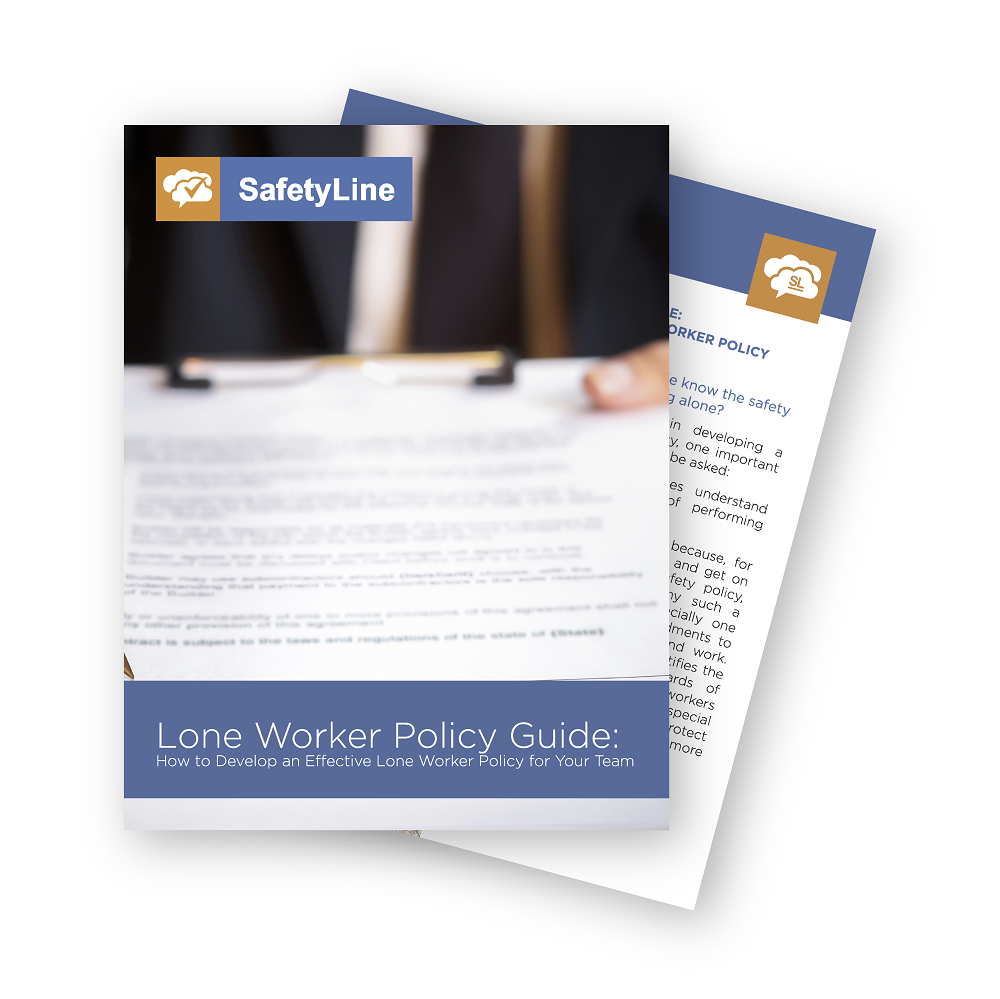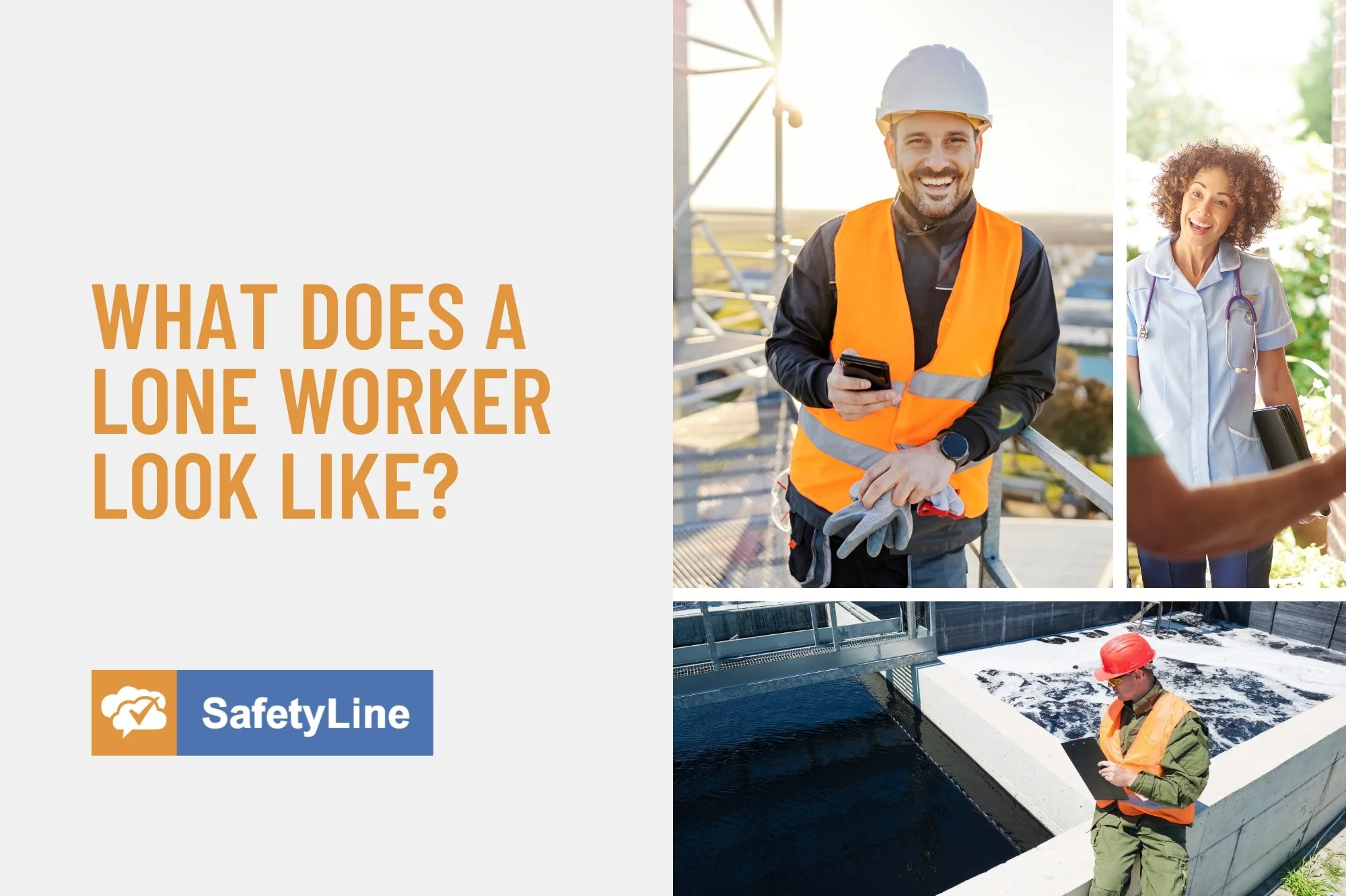Featured Resources
Lone Worker Policy Guide and Template
A lone worker policy is an effective way to ensure that your lone workers are well-educated on your company’s work-alone rules and have extensive knowledge of all workplace hazards that could be encountered on the job.
Hazard Assessment Guide
In the process of doing a hazard assessment for your workplace, it is almost a certainty you’ll learn information about the operational aspects of your organization you were unaware of before the assessment.
View eBook
Develop a Free Lone Worker Program for Small Teams
Developing a free lone worker check-in system is a simple process for small teams that any organization can implement.
View eBook
SafetyLine Blog Categories
General Safety | Lone Worker Safety | SafetyLine News and Updates | SafetyLine Product Updates | Compliance, Policy, and Regulations | Downloadable Resources |
Violence in the Workplace Threatens More Than Your Team
If you’re concerned that workplace violence is currently an issue or has the potential to become a safety hazard with your team and lone workers – even if it’s at home – you need to determine if you have a violence prevention and mitigation program available through your employer and what the next steps are; if not, you should ask your employer to develop one.
4 Ways SafetyLine Complies with Manitoba Lone Worker Regulations and Legislation
Manitoba is one of the seven provinces in Canada that regulate working alone. Given that having at least two employees on a job site was not always practical or useful in protecting workers, these regulations were established to ensure the safety of those workers who were required to perform their jobs alone.
Discover the Benefits of Location Tracking for Lone Workers with Garmin Satellite Devices
Did you know that there are about 3,000 satellites orbiting above our heads, transmitting billions of signals, relaying important information? Some of that valuable data include the locations of workers who are out on the job and without a cellular connection. Satellite technology can save the lives of those working remotely, empowering employers to send help to the right location when seconds can make the difference between life or death in a work emergency.
Work From Home Hazard Assessment Guide
When COVID-19 turned our world upside down last spring, the global labor market responded, sending many of its workers to perform their jobs remotely and at home. According to Stats Canada, nearly 40% of Canadians were working from home in the last week of March and those numbers have undoubtedly increased over the summer. And according to the Stanford Institute for Economic Policy Research, as of June, 42% of the
What are the Key Strengths a Lone Worker Needs to be Successful?
While most of us can adapt to working by themselves and/or remotely, it takes a particular kind of person with special expertise to thrive in these new conditions. For example, an anxious person could find lone work difficult as there are less structure and more responsibility and unpredictability. If some of your team members are struggling with this new professional world, hopefully, this article will provide you with some insight to help them out, increasing productivity and well-being as a result.
Are You Approaching Working From Home Safety Wrong?
Working from home safety is not a new concept or challenge. But the significant number of people now working from home or remotely is a phenomenon we haven’t experienced before. Because of that, many organizations are trying to learn and adapt as the new normal becomes more and more, well, normal.
Can a Healthy Employee Communication Culture Increase Worker Safety?
If or when a second COVID wave hits a number of areas must immediately addressed to protect your workers such as any needed PPE or sanitizing supplies and restructuring of operations to facilitate social distancing while working. But even ahead of those important priorities, you need to establish dependable and accessible employee communication with management and your team, wherever they may be working – at home, out in the field or back at the office or plant.
What SafetyLine Users Are Saying: Lone Workers in Healthcare and Government
The types of organizations and industries that use SafetyLine to protect their remote workers range from healthcare and legal services to agriculture and government at all levels - and yes, those working at home can be considered lone workers. In the first of a three-part series, here are what our grateful SafetyLine users are saying about the service as well as how it has improved the safety and wellness of their remote teams, helping protect their most valuable resource – their people.
Essential Work-from-home Areas to Focus on During 2nd Wave of COVID-19
As we approach what could be another wave of COVID-19 and therefore more workers doing their jobs remotely or at home, employers must not only make their safety a priority, but must also focus on the three areas of mental health, engagement and productivity. After many months of living in a pandemic world, you workers may experience quarantine fatigue with their anxiety increasing, and their engagement and productivity decreasing.
Lonely but Not Powerless: Embrace These Unique Times
In the early days of working from home, it was great. But after the quick honeymoon period (about a month into the quarantine), there were times I desperately wished I had the privacy of my old office. I found that there were more disruptions at home, like our son crawling into my workspace while on a call or having to meet the Amazon delivery guy downstairs, that were breaking my train of thought – I know, first-world problems. One day, I texted a single friend to see how he was doing during the quarantine and working from home. He told me it was getting tough and he was lonely. I never thought of that way and it put my circumstances into serious perspective. I began asking questions like, “How are people finding that meaningful connection during quarantine?”
COVID-19 second wave: Are you ready? How a worker safety monitoring solution can prepare you
While it’s still somewhat debatable at the moment, increasing numbers of COVID-19 cases are showing us that a second wave of the virus may be imminent. The good news is that there may have been lessons learned from the first time, allowing us the privilege of hindsight to improve our tact, better protecting our workers and communities.
Safety training for lone workers should be your priority
Can you afford safety training for your lone workers? Well, we’re here to tell you that you can’t afford not to train your staff and lone workers around workplace safety. Providing safety training is a true investment, on multiple levels. It’s an investment in the safety of your most valuable asset – your team.
On a Tight Budget? Here’s how to Protect Your Lone Workers Without Breaking the Bank
This is the second article of a three-part series: Setting Up a Lone Worker Safety Program, we look at how a company can implement a lone worker safety program on a budget. These days, budgets are stretched thin and are uncertain, making it difficult to allocate funds for areas such as lone worker safety. But lone worker safety should be a priority when you look at the potential legal, reputational and financial costs if one of your lone workers, unfortunately, experiences an accident that could have been prevented or mitigated by the organization.
What Does a Lone Worker Look Like?
In the picture above, can you spot out the lone worker? No? That’s because the lone worker comes from every background and demographic, looking like you and I. This is the first article of a three-part series: Setting Up a Lone Worker Safety Program. The profile of a lone worker has…
Speaking Up to Your Team About Safety Culture
There is a threat existing in many workplaces around the world that most people do not know about. This hazard cannot be mitigated by safety harnesses or helmets, nor can it be prevented through diligent hand washing and face masks. This danger that pervades workplace safety in all industries and in all countries is silence. One of the biggest threats to your company’s well being is having a safety culture where your workers do not feel like they can speak up at work when it comes to their safety. These people understand your company’s safety issues better than anyone and it is in everybody’s best interests that they have a loud voice in this area.
Safety and Key Elements to Successful Working Relationships with Remote Teams
Managing an entirely remote workforce is a phenomenon that many Canadian businesses would have never imagined being tasked with. However, the past few months have forced companies across Canada to adjust to new work-from-home environments. One of the most important drivers of workplace productivity is the network of working relationships within an organization. This article will breakdown the key components of fostering successful relationships with remote working teams.
Should you leave your remote workers alone?
With all of the things going on in the world right now, the safety of workers, remote workers, in particular, is a big concern. For any employer, it is a big job to keep their remote team safe and productive during these unique times, on top of the challenges of maintaining productivity operations. When it comes to remote workers, managers can spend a lot of time making sure these staff members are safe and are getting their work done. The good news is that…
Biological Hazards in the Home for Work From Home Employees
As Canadians continue to spend increased amounts of time at home in light of COVID-19, keeping a clean and safe at-home work environment is more important than ever. Keep in mind that some of the most dangerous hazards are not obvious and may be difficult to see. This article will identify the biological hazards that could be present in your home. It will also suggest techniques to eliminate these risks and preserve your safety while working from home.
Developing a Free Lone Worker Program
If an emergency occurs, lone workers rarely have the resources or back-up necessary to safely deal with the situation alone. Situations that involve confrontation, personal injury, or violence, can quickly become serious if immediate help is not available. Many organizations employ staff who are considered to be lone workers. Any adverse situation can become life-threatening if not immediately detected and resolved. This is why every organization should have a check-in system in place to ensure the safety of their people throughout the day, regardless of their location or activity.
SafetyLine’s Business Intelligence Feature with Contact Tracing to Help Combat COVID-19 Spread
With masses of people emerging from quarantine into public places, wary health officials are keeping a close eye on if or how the virus will be transmitted during this extraordinary scenario. Over the past several months, governments and health authorities have encouraged and enforced social distancing from others to stop of the spread of COVID-19. But now that we are slowing the spread through new social practices such as:






















